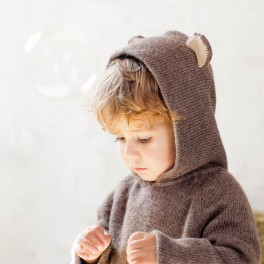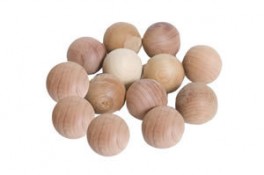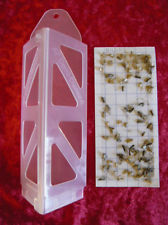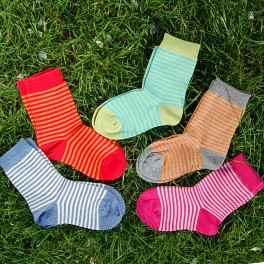 This is what the computer came up with when we asked it to describe us. I quite liked it.
This is what the computer came up with when we asked it to describe us. I quite liked it. Archive for the ‘Good Natured Clothing’ Category
Cambridge Baby Word Cloud
Posted Wednesday, March 6th, 2013 by Rachel King in who we areHead to Toe: Wool is wonderful for Skiing
Posted Wednesday, February 13th, 2013 by Rachel King in dressing for the outdoors, our fabrics Nick's been a massive fan of Merino Wool ever since his sister discovered the benefits of Merino in New Zealand 15 years ago. This year the whole extended family was wearing Cambridge Baby base layers.
The best thing about wool for skiing is that it helps you cope with large temperature changes by reducing the heat transfer between the body and the environment. His woollies kept him warm in freezing blizzard conditions but when the sun came out he didn't have to strip off and carry any layers. He was even able to keep some of his layers on for a bit of apres ski dancing!!!
Another benefit of Merino (especially untreated wool like Engel's) is that it doesn't get smelly. Merino wool reduces the opportunity for odours to develop because it absorbs sweat and evaporates it into the air. Unlike synthetic fabrics, wool doesn't retain odours and freshens up just with airing out. In addition, the outer layer of wool fibres have a high concentration of fatty acids, which have anti-bacterial properties. The inner layers of wool fibre bind with acidic, basic and sulphurous odours that make up body odour. Nick was able to wear all his gear even his pants for the entire week.
Nick's been a massive fan of Merino Wool ever since his sister discovered the benefits of Merino in New Zealand 15 years ago. This year the whole extended family was wearing Cambridge Baby base layers.
The best thing about wool for skiing is that it helps you cope with large temperature changes by reducing the heat transfer between the body and the environment. His woollies kept him warm in freezing blizzard conditions but when the sun came out he didn't have to strip off and carry any layers. He was even able to keep some of his layers on for a bit of apres ski dancing!!!
Another benefit of Merino (especially untreated wool like Engel's) is that it doesn't get smelly. Merino wool reduces the opportunity for odours to develop because it absorbs sweat and evaporates it into the air. Unlike synthetic fabrics, wool doesn't retain odours and freshens up just with airing out. In addition, the outer layer of wool fibres have a high concentration of fatty acids, which have anti-bacterial properties. The inner layers of wool fibre bind with acidic, basic and sulphurous odours that make up body odour. Nick was able to wear all his gear even his pants for the entire week.
What Nick Wore
Pickapooh Balaclava The teen size fits Nick. He said it was brilliant. He normally hates balaclavas, but this was super soft, didn't itch and could be rolled up into a hat when the blizzard subsided. Wool Zip Fleece Super warm, soft and breathable. Great for skiing and everyday wear. Long Sleeved Merino Vest Soft, warm, breathable layer that doesn't ad bulk and its anti-bacterial properties mean it doesn't get smelly. Nick wears one as a base layer in winter and for cycling. Men Wool Silk Long Johns Soft, warm, breathable and flexible. Again these are brilliant for cycling. Nick took some synthetic long johns with him so that he could compare them with wool. But after one day's wear he found them intolerably itchy and was pleased to be back to his woollies the following day. Wool pants There aren't many pants you can wear for a week. Comfy, soft flexible and warm. Great for running, skiing and cycling and other sports. Their breathability may even improve your fertility compared to synthetic cycle shorts. Lambs Wool and Alpaca sock These make brilliant ski socks. As they are very smooth and slide easily in the boot. Alpaca wool is even warmer than sheeps wool so they'll keep your feet super toasty.Free Gift Wrap this Advent
Posted Thursday, December 13th, 2012 by Helen East in competitions & offersWhat would Connie like for Christmas?
Enter the answer at checkout, in the voucher code box, and we'll wrap for you the item of your choice. Tell us which one to wrap in the notes box, also at checkout. While our stocks of gorgeous paper last! And, to win a lovely pair of wool or suede slippers for your child or yourself in our Christmas Slipper Prize Draw, email the answer to team@cambridgebaby.co.uk.~~ ♥ ~~
~~ ♥ ~~
We'd love to know what your children are thinking of as Christmas approaches! Comment and let us know. For bonus entries into our Christmas Slipper Prize Draw, tweet this link, share with your friends, share on facebook or on your blog -just tell us and we'll give you an extra entry for each share! Thank you for spreading the word! The small print.... no purchase necessary to enter the Christmas Slipper Prize Draw - just follow the instructions. Enter by 20th December 2012. If you can't see the video just email us to enter at team@cambridgebaby.co.uk - and we'll also let you know how to gain your gift wrap this week. This fairly traded offer ends soon on 19th December 2012 (so make the most of it) or when our stocks of hand-made paper run out!~~ ♥ ~~
Advent Special – number two!
Posted Saturday, December 8th, 2012 by Helen East in competitions & offersWhat would Eleanor like for Christmas?
Enter the answer at checkout for £10 off any of our sumptuous Alpaca children's jumpers! Email us the answer for (another) entry into our Christmas Slipper Draw - win a lovely pair of wool or suede slippers for your child or yourself. We'd love to know what your children are thinking of! Comment and let us know. And for bonus entries into our Christmas Slipper Prize Draw, tweet this link, share with your friends, share on facebook or on your blog -just tell us and we'll give you an extra entry for each share! Thank you for spreading the word! And a bonus entry for your comments too. xx The small print.... no purchase necessary to enter the Christmas Slipper Prize Draw - just follow the instructions. Enter by 20th December 2012. If you can't see the video just email us to enter at team@cambridgebaby.co.uk - and we'll also let you know how to gain £10 off Alpaca children's jumpers (you can see some here!) this week. This fabulous alpaca offer ends soon on 12th December 2012 (so make the most of it)!~~ ♥ ~~
Advent Special
Posted Monday, December 3rd, 2012 by Helen East in competitions & offersMy son slept through… for the first time
Posted Friday, November 30th, 2012 by Rachel King in sleeping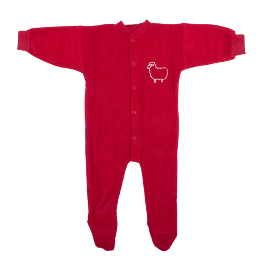
Martinmas
Posted Sunday, November 11th, 2012 by Rachel King in for the seasonsMartinmas is on November 11th. It's my favourite festival that my daughter celebrates at Kindergarten. St Martin was famous for cutting his cloak in half with his sword and giving half to a beggar to save him from freezing. Legend has it that, the following night, Christ appeared to Martin in a dream dressed in the piece of cloak Martin had cut. “All Year Round” - a lovely book about celebrating the seasons with your family - says
“Martin’s half cloak brought hope and comfort to the beggar-his compassionate gesture may warm us also, and protect us from wintry despair.”To celebrate Martinmas, we carry home-made candle lanterns as a symbol of the small light we can shine into the dark world. There are links to making your own lantern below. Families join together for a lantern walk through the woods, and the candlelight and song make the experience a magical one for everyone. This year for us it was very special - the teachers had strung candle lanterns on the trees, lighting the path we followed as it wound through the woodland. We rested under a the spreading branches of a sheltering tree, and the children gathered round to hear the story of St Martin, and each received their own gift of home-made biscuits. Here is one version of a St Martins Song that they sing
I walk with my little lantern, My lantern travels with me. Above the stars are shining, And down below shine we. Shine bright my light! All through the night! Rabimmel, rabammel, rabum. Shine bright my light! All through the night! Rabimmel, rabammel, rabum.
Lantern Ideas
This is a tutorial for the leaf lantern. My children age 3 and 18 months loved scribbling with wax crayons and collecting the leaves yesterday. The best bit is it looks wonderful no matter how crazy the scribbling as long as you get loads of wax on there. http://bebehblog.com/leaf-lanterns-ive-officially-become-a-crazy-craft-blogger/ Here is a german website full of lantern ideas, there are also lots on pinterest. http://www.kikisweb.de/spezial/stmartin/Laternen/laternen.htm
Here is a german website full of lantern ideas, there are also lots on pinterest. http://www.kikisweb.de/spezial/stmartin/Laternen/laternen.htm
Sharing ideas
To encourage sharing, try a special Martinmas breakfast of a croissant or bread that can be cut in half and shared with the person next to you, to remind us of St Martin cutting his cloak in half and giving it away, and to value community and the gifts we all bring to others. Given that wool coats last through many children, Martinmas is a good day to hand on coats that your family have grown out of to a new family to enjoy. No need to cut them in half though! There are more nice ideas at The Wonder Of Childhood's Martinmas post - here.Wrap up Warm
Finally here are are a few tips to keep you warm if you go on a lantern walk.- Several light layers trap extra air, giving more warmth and breathability. Wool/silk vests and fine NZ Merino tops and baby-bodies are particularly good for this, and our lightweight jumpers.
- Long-johns or leggings make SUCH a difference under trousers.
- Wool socks inside boots for children and grown-ups (even if the boots leak or feet get wet, they'll still be warm and cosy).
- Lined wool booties for young babies keep the tiniest feet warm.
- Finally, choose a warm, practical hat that's comfortable for your baby and which your older child actually likes!
Alpaca – why is it so good for your family?
Posted Wednesday, November 7th, 2012 by Rachel King in our fabricsBaby Alpaca wool is soft and warm and is one of the best natural fibres for your skin. Because of its unique structure, it's exceedingly gentle for your baby and child, and yet it's better for you than even Merino sheep's wool in several ways.
How can Alpaca wool be so special?
For thousands of years Alpacas have grazed the high plains of the Andes and the local people have sheared their fleece to make clothing for protection against the cold conditions. Today, traditional techniques are still being used to make the finest ranges of alpaca knitwear from this unique fibre. (more…)
How to protect your wool and silk from clothes moths
Posted Wednesday, September 19th, 2012 by Helen East in fabric careWhen you put your lovely wool and silk things away over Summer, you want to be sure that in the Autumn they're still looking and feeling soft and beautiful.
The main worry when storing wool clothes is... Tineola Bisselliella, the clothes moth. The common clothes moth, or wool moth, is on the increase in Britain and if you've found small holes in your woollen clothes, it's the likely culprit.
Wool moth larvae are hungry for your wool and will also enjoy silk, leather, cashmere, alpaca and any other natural fibre - sometimes even cotton. Their favourite is grubby, sweaty, smelly natural fibres - these are like cake crumbs to an ant, or tasty cheddar to a mouse - irresistable!
So here are our top 5 natural tips for keeping the clothes moth at bay. If you're reasonably organised, we guarantee these will work! But if housekeeping is not your thing, scroll to the end...
Tip 1 - Expose your wool clothes to light
This is so simple, and really works! Unlike most moths, clothes moths don't like light or fresh air. So, shake out those jumpers, beat your carpets outside, hang out your wool blankets in the sun and brush them.
It's a fact that the clothes moth larvae will wriggle away from the sun - and if they can't escape, the larvae will drop off your clothes. Marvellous. And if you brush your clothing too, you brush off or damage the eggs and break the cycle again.
The life cycle of clothes moths is about 3 weeks, so I try and hang out our wool blankets and sheepskins every few weeks on the line. This also refreshes them, and seems to keep them lovely and soft too.
Tip 2 - Hoover them up
Clothes moths are on the increase. One reason that's been given is that, as a nation, our home cleaning habits leave a little to be desired. Hoovering and cleaning just what you can see leaves nooks and crannies for moths to breed in - the corners of the cupboards, around the skirting boards, in the carpet under the chair...
Clothes moths like to be undisturbed to breed. We need to disturb them! So turn out your clothes drawers and cupboards, and hoover inside them, move chairs and chests of drawers and hoover under them. And then throw away the hoover bag!
Tip 3 - Lavender and cedar balls
Bags of lavender and cedar balls are the most natural moth repellents. On the plus side, they are non-toxic and easy to get hold of. Cedar oil will kill young larvae (though not eggs, older larvae or moths) and lavender acts as a repellent. The downside is that the lavender will need replacing - it needs to be fresh to be effective, and the same for the cedar balls too.
You can use lavender oil as well as lavender flowers, and you can replenish the cedar oil from your cedar balls or blocks directly. As cedar oil needs to be in sufficient concentrations to protect your woollens, ideally you need to keep susceptible clothing in sealed chests or tubs to allow the concentrations to build up.
We've found pheromone moth traps work really well too. They're impregnated with the female moth pheromone which entices the male moth, which then gets stuck in the gluey sticky trap. They're pretty good for keeping numbers low, but won't eradicate an infestation.
Tip 4 - Store your woollens clean
I used to wait until I had "enough" wool clothing that needed washing to make up a wool wash. Now I don't, because wool moths love undisturbed, grubby wool. Your wool washing basket is their perfect home.
So, wash your wool, silk, cashmere, alpaca and all your finest fibres fairly soon after they go in the washing basket and the moths will be kept at bay.
If you can, dry in sunlight.
Always store your wool clothes over the Summer just after washing so that they're nice and clean. Dry cleaning is very effective too, though very often not an eco-friendly option.
Tip 5 - Freeze the clothes moth out!
Sealing and freezing is our top tip for long-term storage. Many of our customers recommend vacuum bags: launder your clothes first, bag them with lavender or cedar, and seal the bags for safe long-term storage.
"I wash our woolens and then store them clean in the freezer. They are such treasures, I don't mind sacrificing the space." - Alison
"And if you freeze them in ziplocks, then you can take them out and store them anywhere, bug-free!" - Jennifer
How long should you freeze them for? Most sites say 3 days, some are more cautious and go for two weeks. After this you can free up your freezer space again, knowing you'll have happy healthy woollens come the Autumn. Otherwise four days in the freezer is enough to kill any larvae that are left, guaranteeing you hole-free beauty come the Autumn.
Freezing is a safe, effective natural option to remove clothes moths.
Summary - to protect your wool from clothes moths, remember
- Sun and air
- Hoover and clean
- Store with lavender and cedar
- Use pheromone moth traps
- Seal and freeze!
And if you're not so organised...
I'd still recommend moth traps (they last for months, which even I can manage to cope with) and I'd also recommend not waiting to wash your woollens. A couple of jumpers and a pair of socks is a good wool wash!
But if you're not a natural 1950s home-maker, let's face it, however much you love gorgeous natural fabrics you probably won't replenish the lavender, and vacuum bags just drive you mad. Airing jumpers every three weeks or hanging out wool blankets is just not going to happen - and as for hoovering cupboards... honestly! What an idea.
Moth balls are not a solution - they're often very toxic, generally smelly and their vapours can be carcinogenic. Nice. And chucking a few cedar balls in just isn't going to work.
Luckily there is a solution, though not a natural one. Look into chemical paper strips - these are impregnated with modern chemical moth killers that are nowhere near as unpleasant as old-fashioned ones, and will kill off the larvae too. You can even layer them touching your clothes, though you might prefer to protect your clothing from direct contact with paper.
And though this is not a natural solution, it's still better for you and for the environment to make your good quality clothing last!







